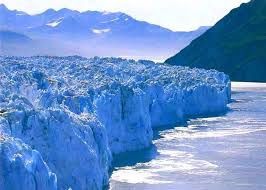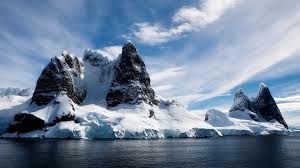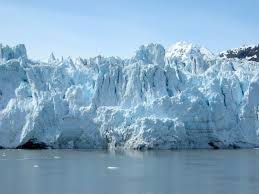A mass of ice which moves slowly down a valley from above the snowline towards the sea under the force of gravity. It is formed owing to the pressure of the immense depth of snow, which depresses the freezing point. The snow in the lower layers thus melts and then solidifies being later transformed by the continued pressure into clear ice.

From the snowfield, where it almost always originates, the glacier may extend far below the snowline. At its source, there is an abundant supply of ice and glacier is slow and the glacier is thus broad and deep. Lower down the temperatures are higher and the supply of ice melting equals the supply of from above and there the glacier ends.

Usually, the glacier is tongue shaped, being broadest near its source and narrowest where it shape also conforms to that of the valley in which it lies. It curves with the valley and to some extent its surface follows that of the valley floor. The center of the glacier is usually higher than its sides and the cross section of its surface is thus slightly convex.

The surface is often uneven and sometimes cut by deep cracks. One cause of the unevenness of the surface is the melting of the top layer of the ice during the summer, when the water wears channels in the ice. Again, the lower layers of ice may be protected from melting by stones or other solid matter and mounds of ice covered with debris are thus formed on the surface. The rate of movement or flow of a glacier is greatest in the middle.



